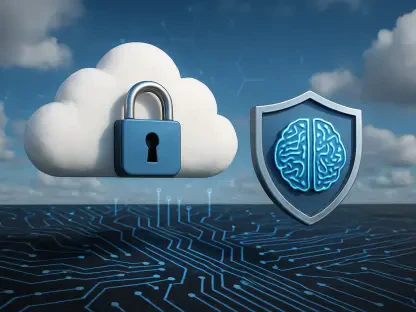The recent discovery of a massive data breach involving 2.7 billion records linked to Internet of Things (IoT) devices has sent shockwaves through the tech community, raising serious concerns about cybersecurity and data protection practices. Mars Hydro, a Chinese company known for manufacturing IoT devices such as LED lights and hydroponics equipment, left an extensive and highly sensitive database unprotected. The unmarked database, containing logging, monitoring, and error records for IoT devices sold worldwide, was publicly accessible, making it vulnerable to anyone who knew where to look. This breach serves as a stark reminder of the ongoing vulnerability of IoT devices and the need for stricter data protection measures.
Security researcher Jeremiah Fowler was the one who uncovered the vulnerability and immediately took action by sending a responsible disclosure notice to LG-LED SOLUTIONS and Mars Hydro. Public access to the database was promptly restricted following his notice. However, the duration of the exposure remains uncertain, and there is no public disclosure about whether unauthorized parties accessed the data while it was available. To fully understand the extent of potential misuse, an internal forensic audit would be required, but such an investigation has not been confirmed.
1. Update your Wi-Fi password
The unprotected database that surfaced from Mars Hydro contained sensitive user data such as Wi-Fi network names (SSIDs) and passwords stored in plain text. This lapse poses a significant risk, making it crucial for affected users to change their Wi-Fi passwords immediately. Even if individuals believe their credentials were not specifically compromised, the best course of action is to assume otherwise for maximum security. A strong password is essential in this scenario. It should be complex and incorporate a mix of upper and lowercase letters, numbers, and special characters. Common or easily guessable passwords, such as names, addresses, or basic numerical sequences, should be strictly avoided to reduce the risk of unauthorized access.
This breach highlights the importance of having a robust process in place for managing and updating passwords. It’s a common yet essential step in securing home networks. Users should treat their Wi-Fi credentials with the same level of care as other sensitive information, such as banking details or social security numbers. Regularly changing passwords and using password management tools can help maintain a high level of security. Additionally, educating family members or other users of the network about proper password practices can further safeguard against potential breaches of this nature.
2. Activate two-factor authentication (2FA)
Two-factor authentication (2FA) is a critical security measure that can significantly bolster the protection of your network. If your router supports 2FA, activating this feature adds an essential layer of security. With 2FA, even if an unauthorized person gains access to your login credentials, they would still require a secondary authentication code to log in. This code is typically sent via text message or generated by an authentication app, making it much harder for hackers to gain access. The additional layer greatly mitigates the risk of unauthorized access and is especially useful in scenarios where Wi-Fi credentials might have been exposed, such as this Mars Hydro breach.
Implementing 2FA across all possible devices, not just routers, can provide a unified security posture that protects various aspects of your digital life. This security method is increasingly becoming standard practice in the industry as it offers a simple yet effective defense mechanism. Educating users about the importance of 2FA and encouraging its usage can further help in creating a more secure digital environment. It’s a proactive step that not only protects against current threats but also prepares the network against future vulnerabilities that might arise due to similar breaches.
3. Observe your network for unusual activity
Given that the Mars Hydro database also contained IP addresses and device ID numbers, attackers could potentially exploit this information to access home networks remotely. To safeguard against this, it’s vital to observe your network for any unusual activity diligently. Regularly checking the router’s admin panel can help users stay informed about all connected devices. This routine monitoring creates an opportunity to spot and handle unfamiliar devices swiftly, thereby minimizing risks. If an unfamiliar device is detected, it should be removed promptly, and the Wi-Fi password should be changed immediately to prevent further unauthorized access.
Taking this proactive step ensures that you are continuously aware of what is happening on your network and can react swiftly to any potential security threats. It’s also advisable to familiarize yourself with the normal functioning and connected devices on your network. This way, any anomaly can be easily identified and addressed. Regular network activity reviews should become a habitual security practice, similar to regular updates and password changes.
4. Keep your devices up-to-date
Outdated software and firmware are among the most common vulnerabilities for IoT devices. In the context of the Mars Hydro breach, where logging and error records were exposed, having updated software becomes even more critical. Regular updates ensure that your devices receive the latest security patches, protecting them from known threats and exploits. Users should frequently check their device settings for available updates and install them as soon as possible. This practice should extend to all smart devices within the home network. Routers, in particular, should not be overlooked as they are prime targets for hackers and serve as gateways to other connected devices.
Ensuring that all smart devices, including routers, are running the latest firmware versions is a fundamental step in maintaining network security. Many IoT devices are notorious for running on outdated or unsupported software, leaving them susceptible to cyberattacks. Making it a habit to regularly check for and apply firmware updates can greatly mitigate these risks. Users should also consider enabling automatic updates if this feature is available, allowing devices to receive patches and improvements seamlessly.
5. Be cautious of phishing attempts and use strong antivirus software
Following the exposure of sensitive data, attackers may attempt to exploit this information by launching phishing attacks. Phishing emails often disguise themselves as legitimate requests, urging users to reset passwords or provide additional personal information. If you receive any communication from Mars Hydro or LG-LED SOLUTIONS prompting such actions, proceed with extreme caution. Cybercriminals are adept at creating convincing fake login pages designed to steal credentials. To mitigate this threat, never click on suspicious links or download attachments from unknown senders. Instead, navigate directly to the official website to verify the legitimacy of any such requests.
In addition to being cautious of phishing attempts, investing in strong antivirus software is paramount. Comprehensive antivirus protection can help safeguard your devices against malicious threats, such as phishing emails and ransomware scams. It can also alert you to potentially dangerous links and downloads, further protecting your personal information and digital assets. Regularly updated antivirus software adds an extra layer of defense, ensuring that your devices are protected from emerging threats. By combining vigilant email practices with the latest antivirus technology, users can significantly enhance their overall security posture.
6. Erase your exposed data from data brokers
The recent revelation of a massive data breach, involving 2.7 billion records associated with Internet of Things (IoT) devices, has deeply unsettled the tech industry. This breach, tied to Mars Hydro, a Chinese firm that produces IoT gadgets like LED lights and hydroponics systems, unveiled a huge, highly sensitive database left without protection. The unmarked database, which captured logging, monitoring, and error records for IoT devices globally, was publicly accessible to anyone who knew where to look. This incident starkly highlights the persistent vulnerabilities of IoT devices and underscores the urgent need for improved data security measures.
Jeremiah Fowler, a security researcher, discovered this vulnerability and acted swiftly by sending a responsible disclosure notice to LG-LED SOLUTIONS and Mars Hydro. Following his notification, public access to the database was quickly restricted. Nevertheless, the duration of this exposure is unclear, and it remains unknown if any unauthorized parties accessed the data during its vulnerability. Understanding the full extent of potential misuse would require an internal forensic audit, although such an investigation has not yet been confirmed.









